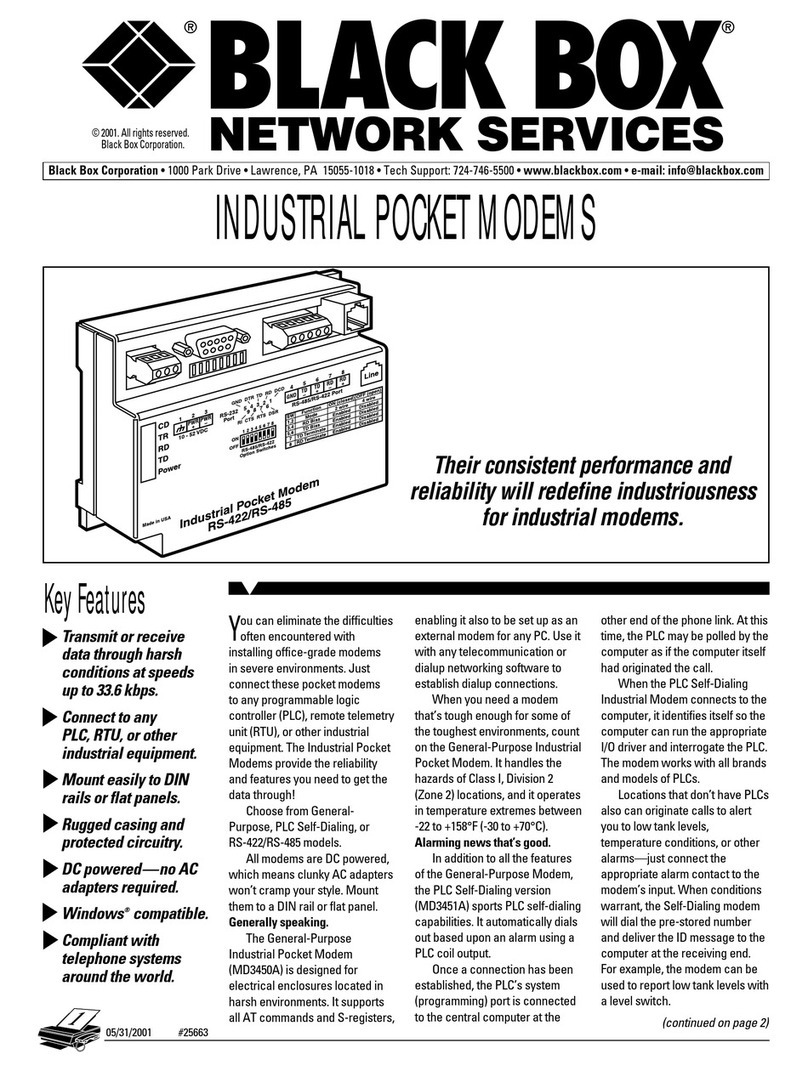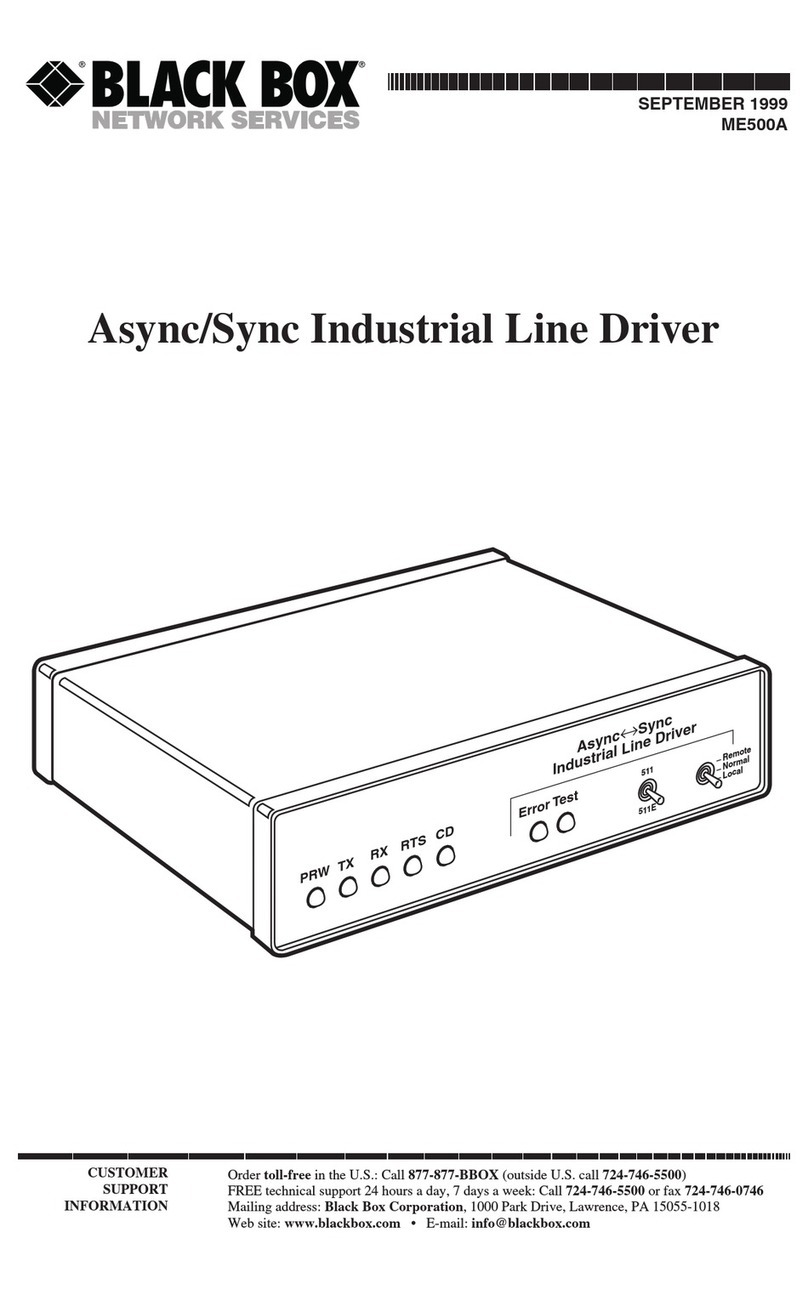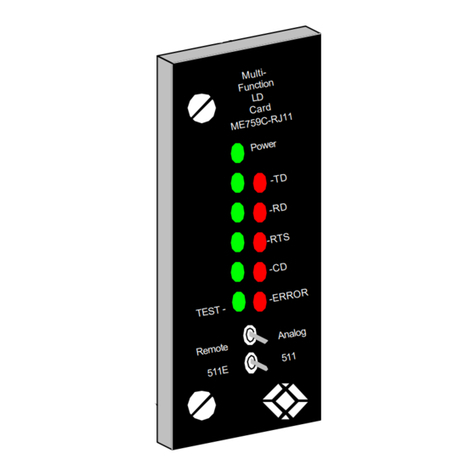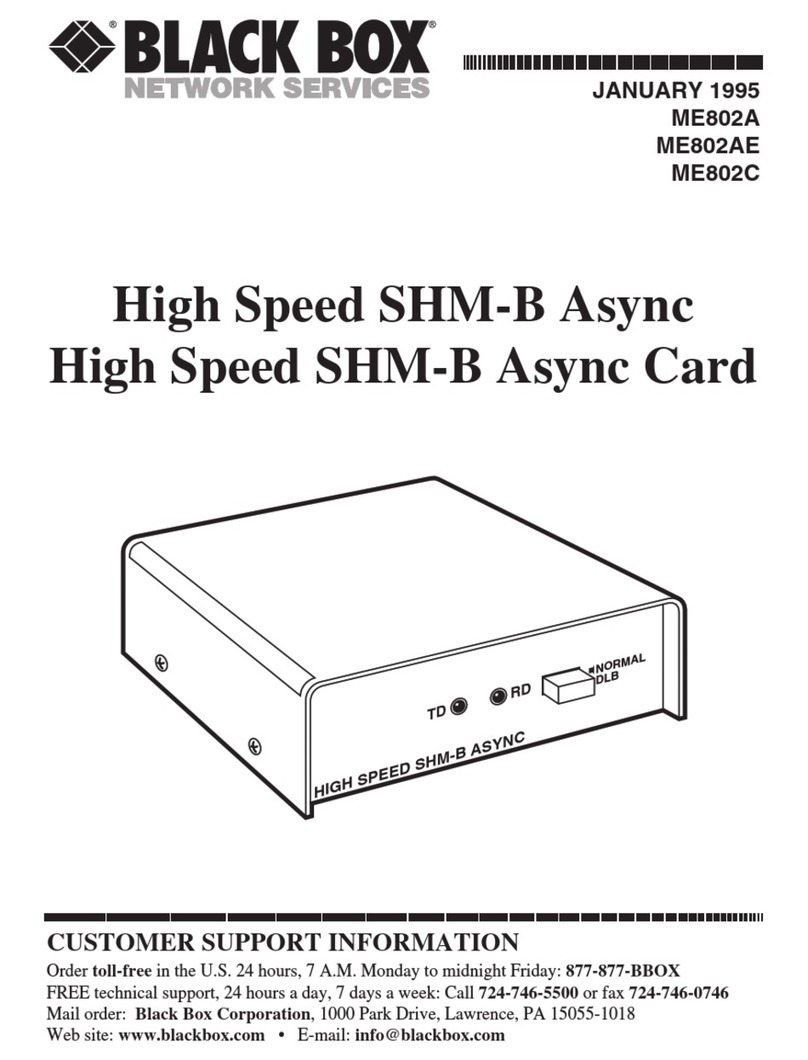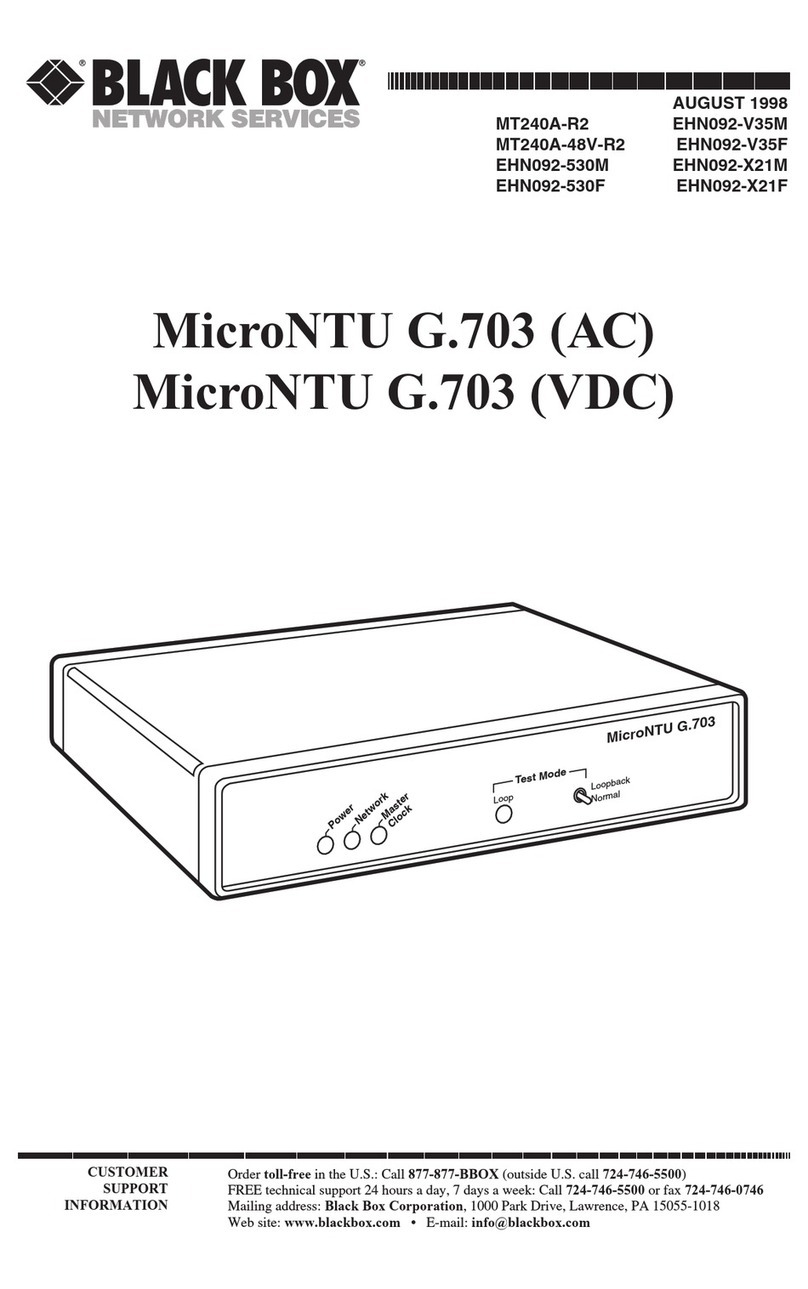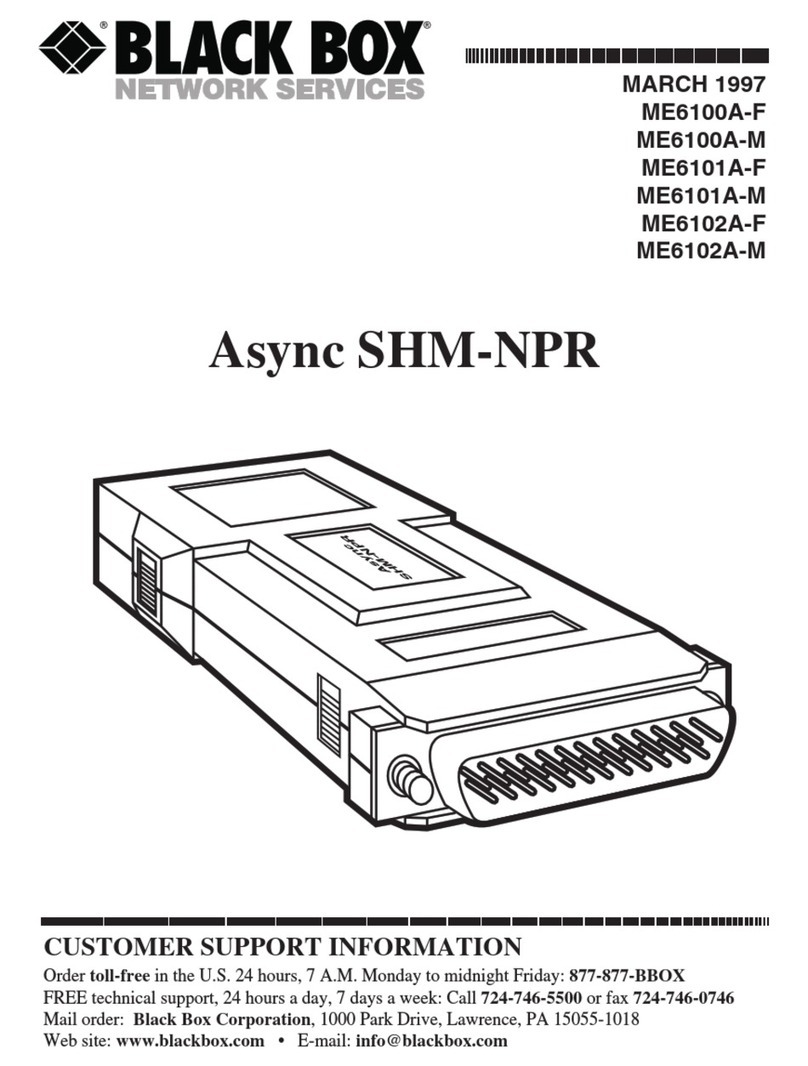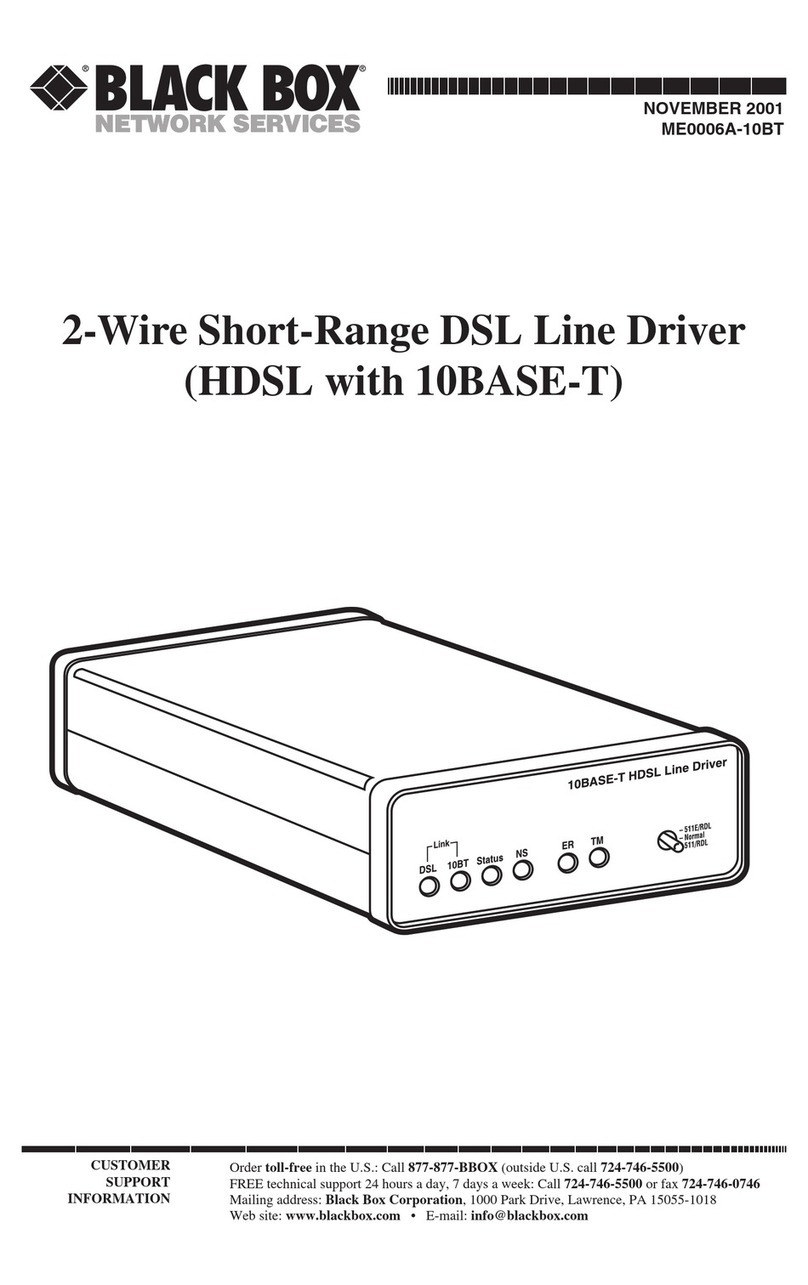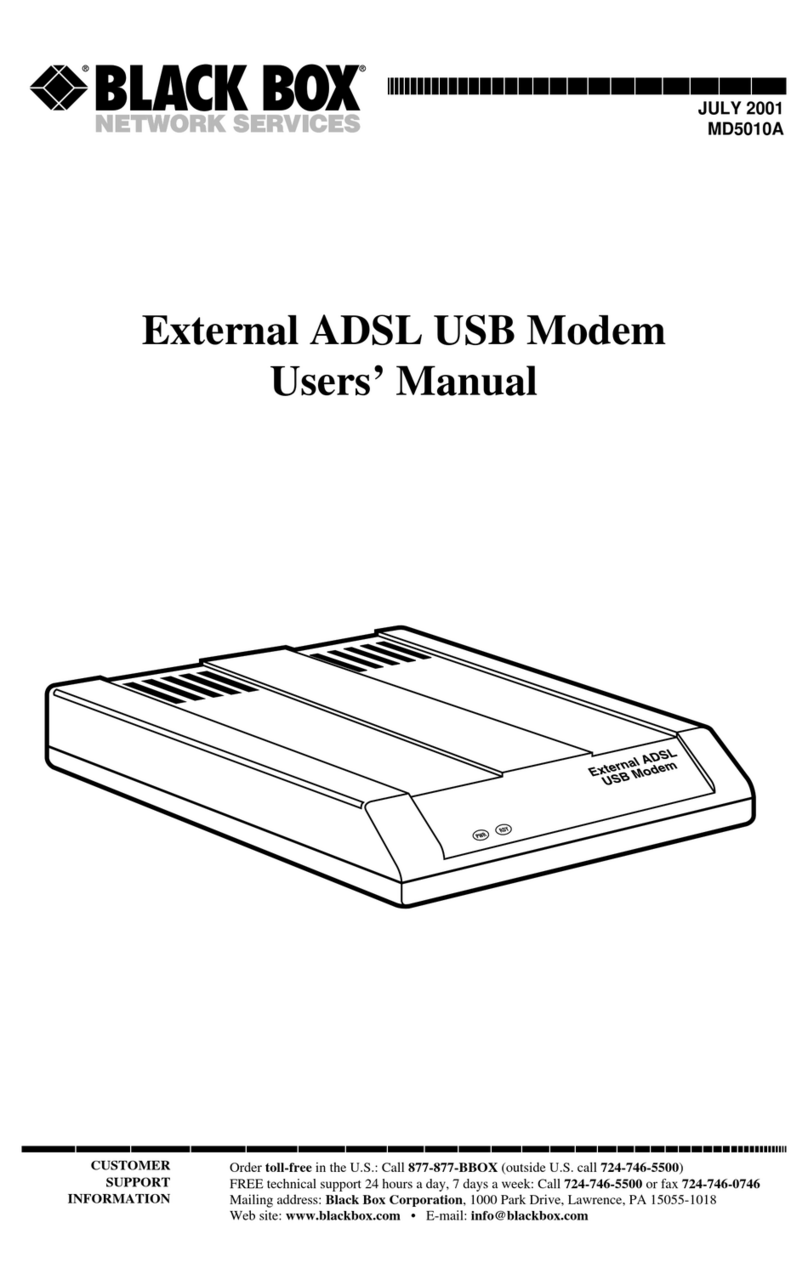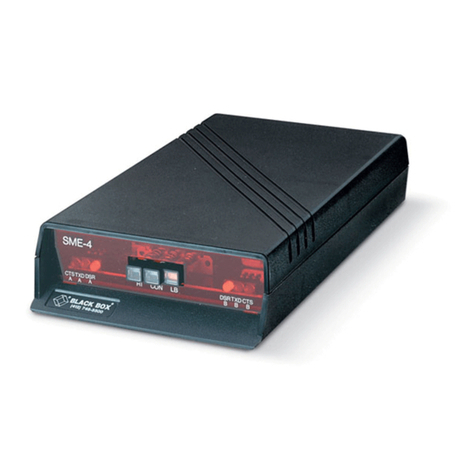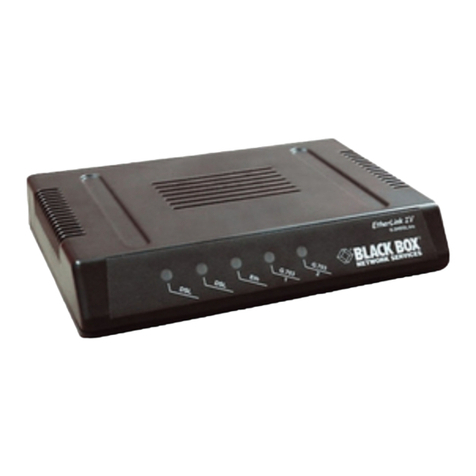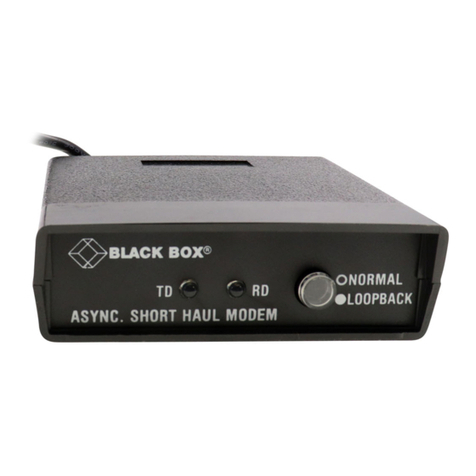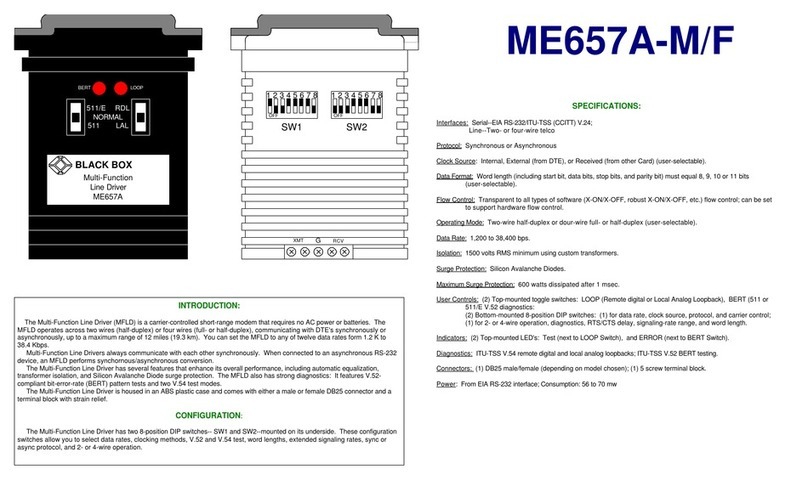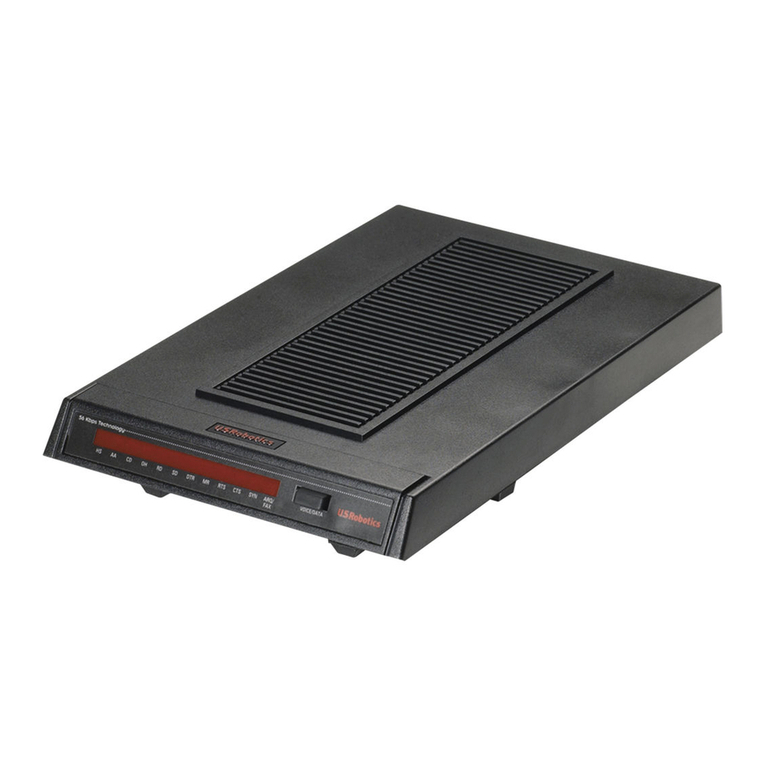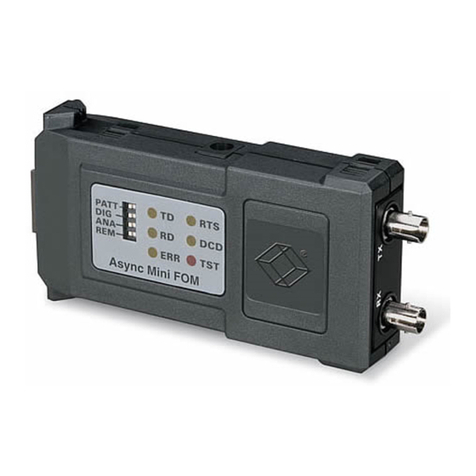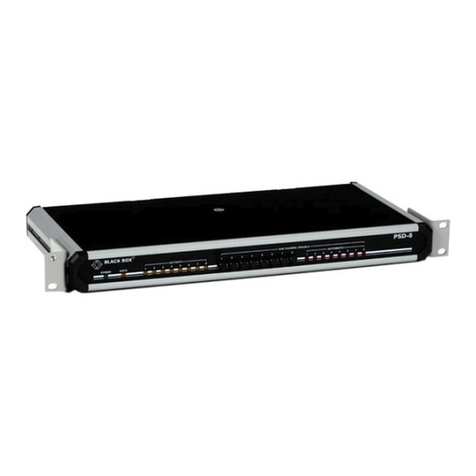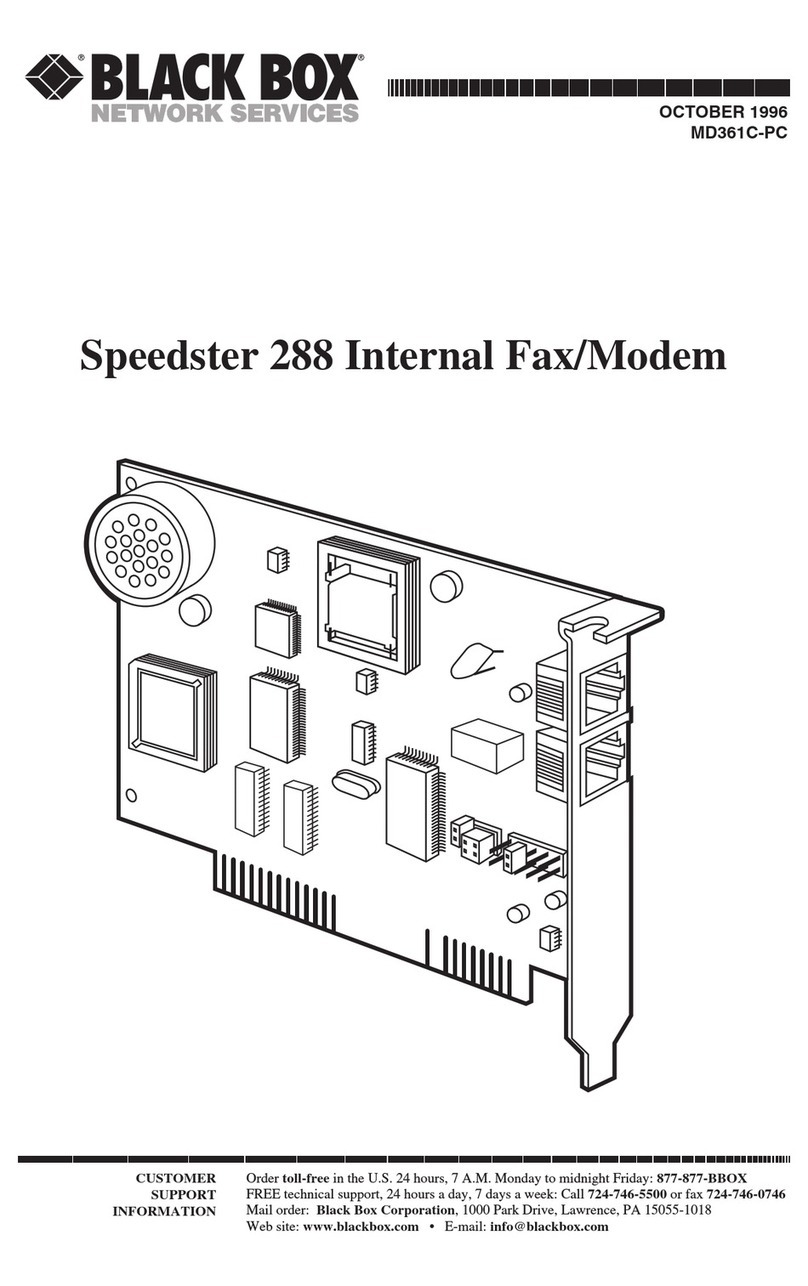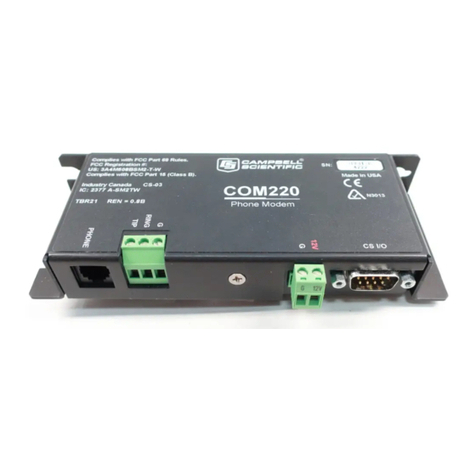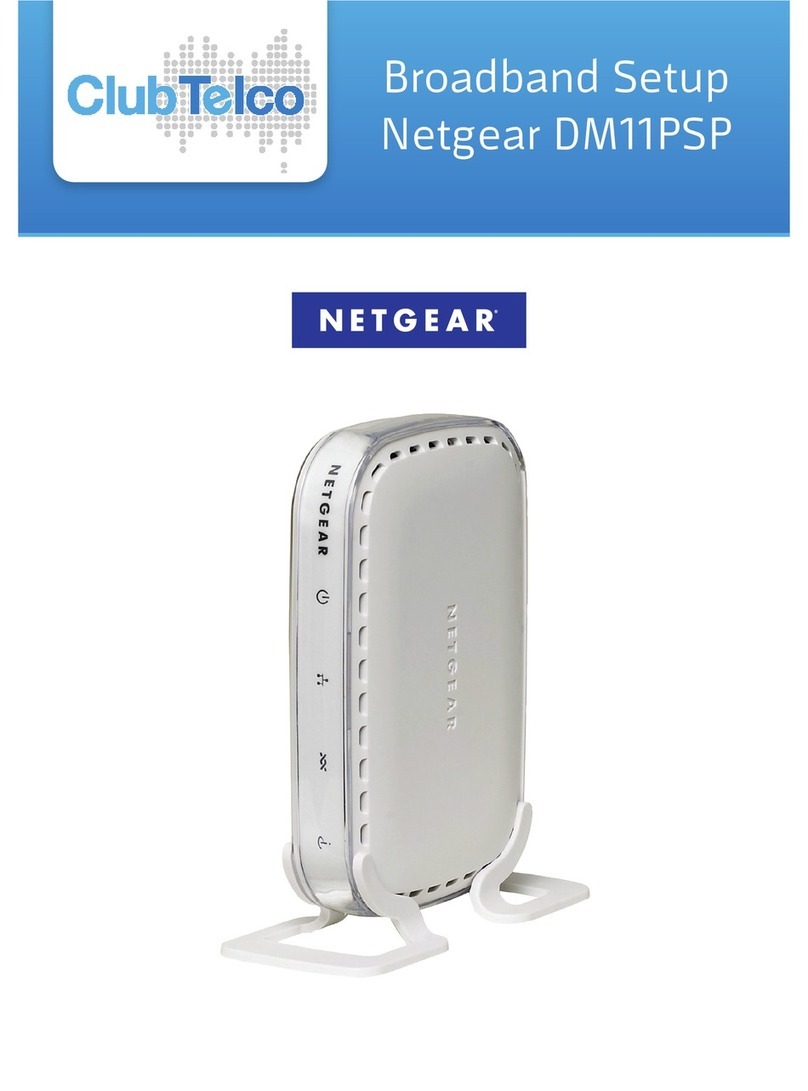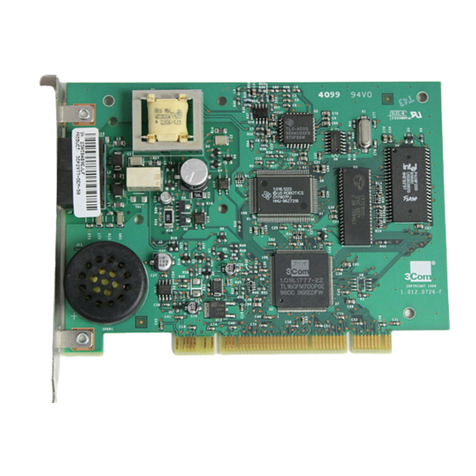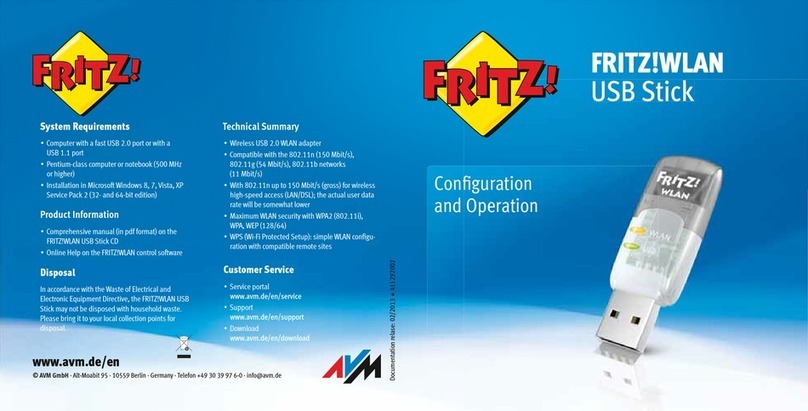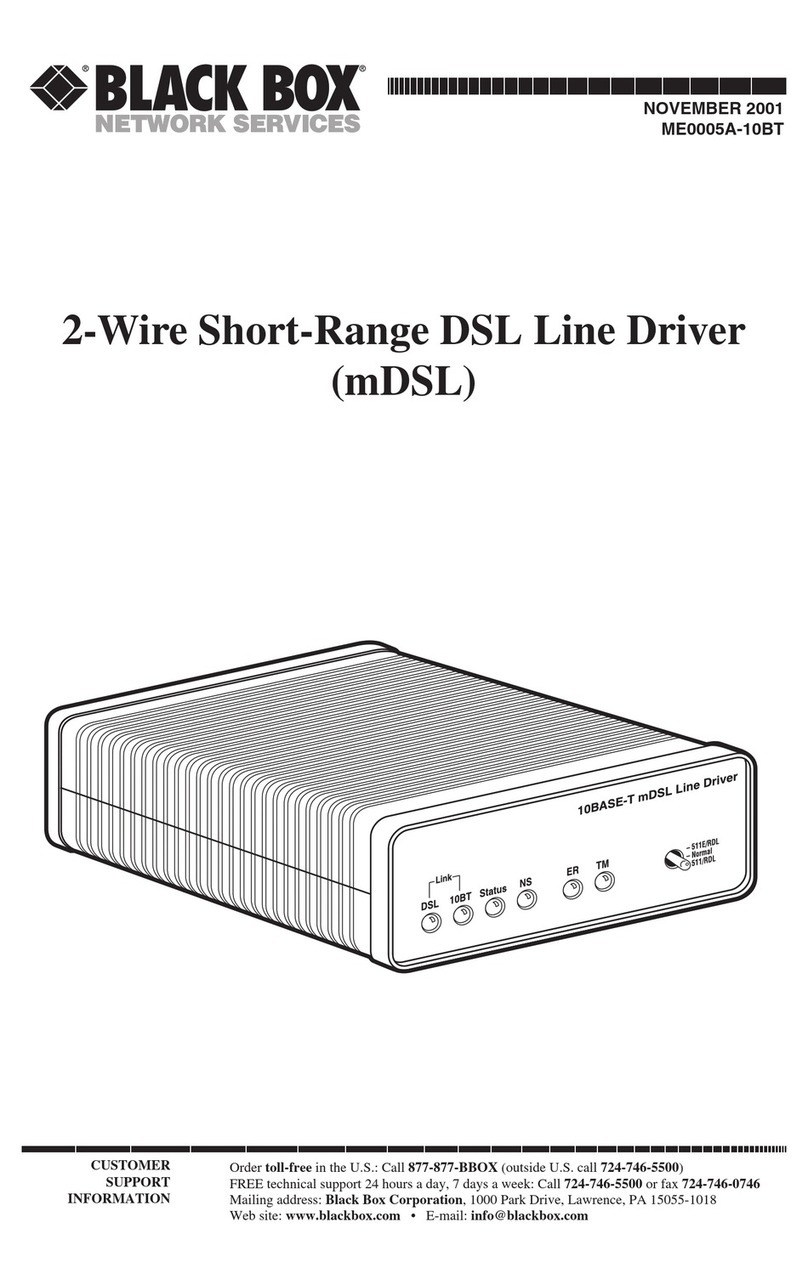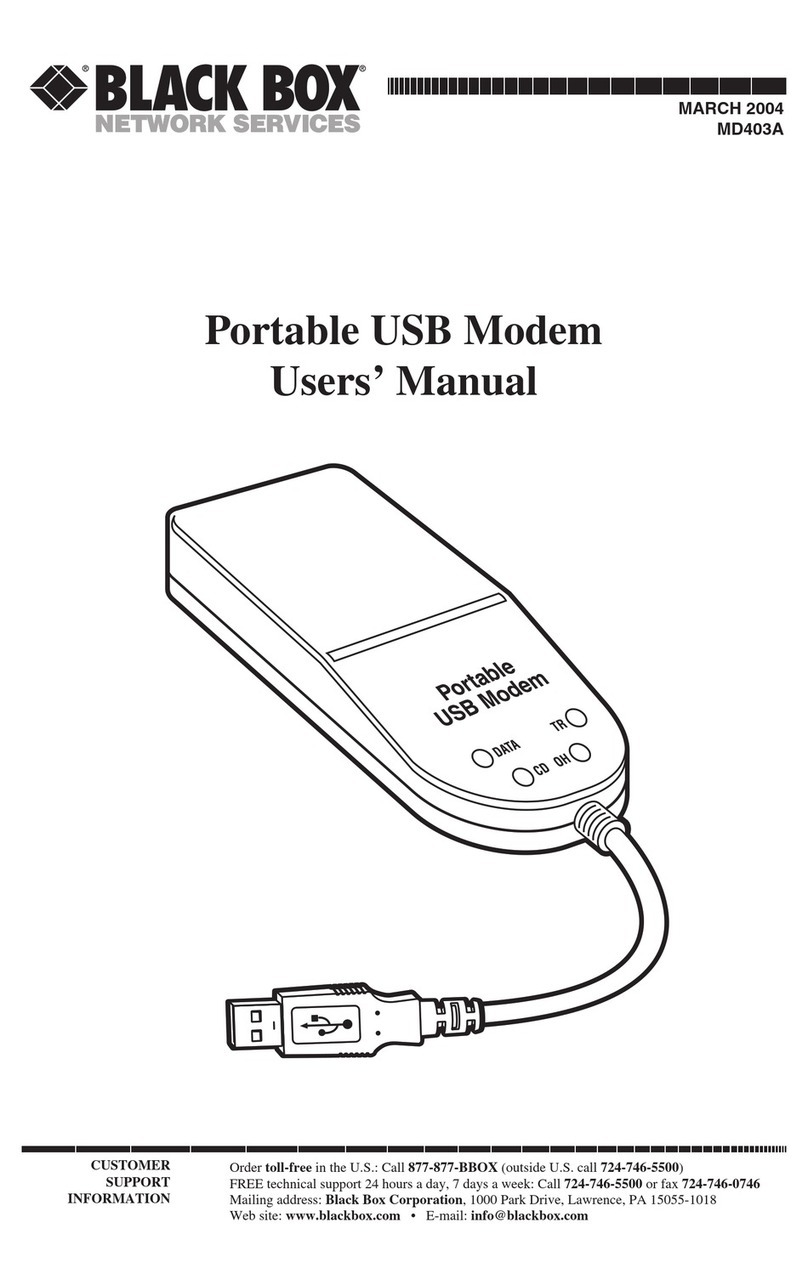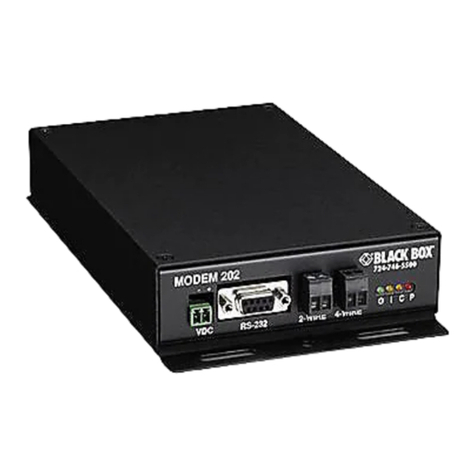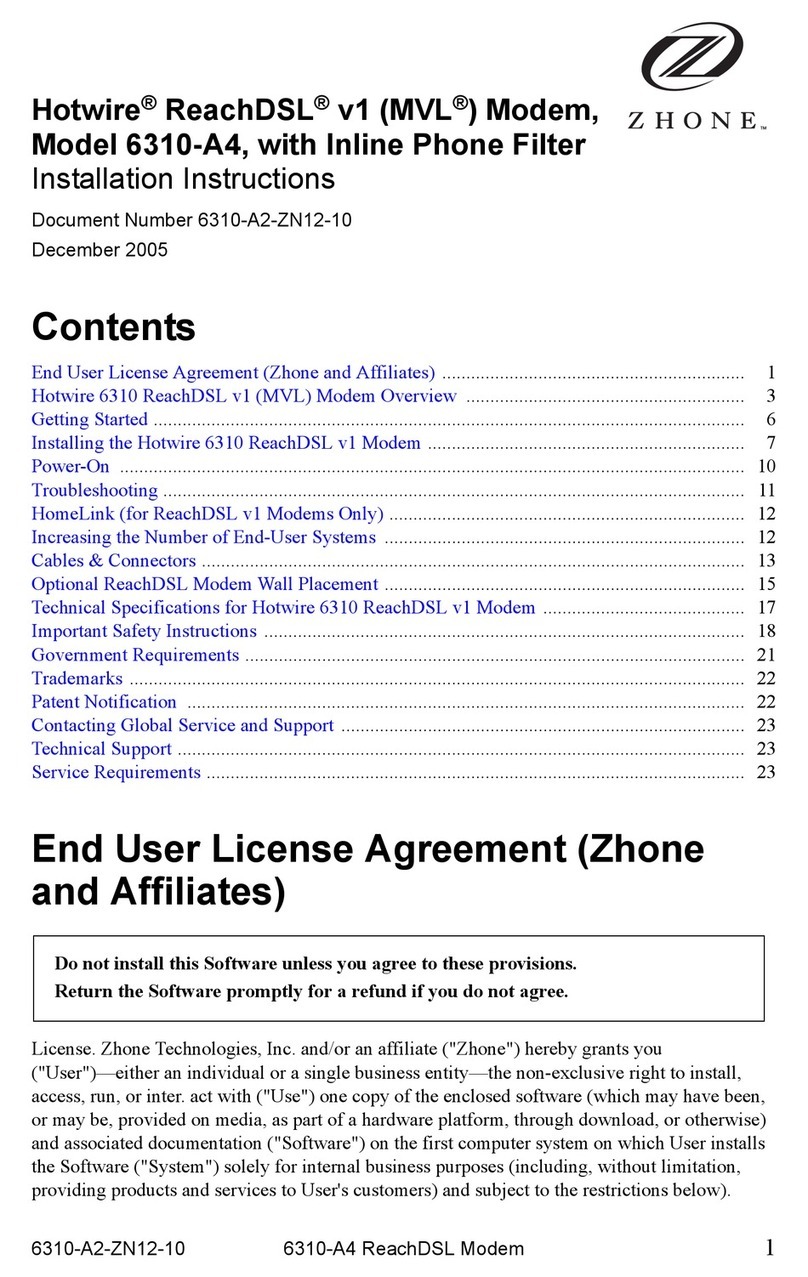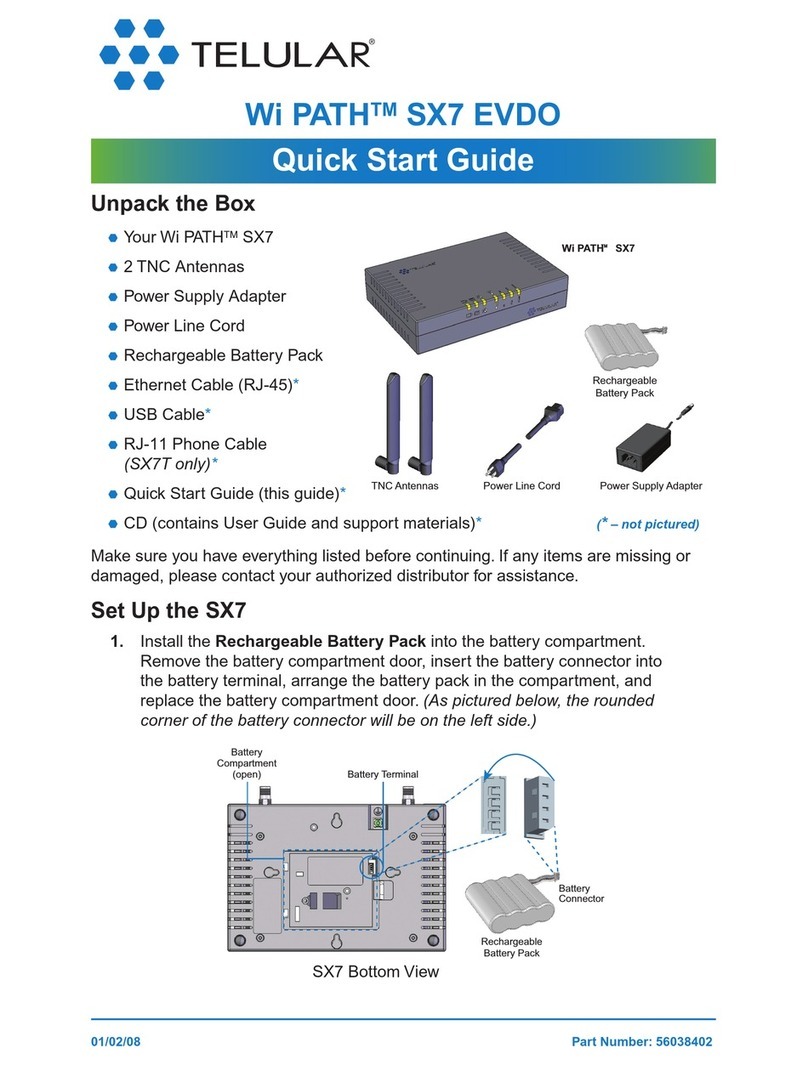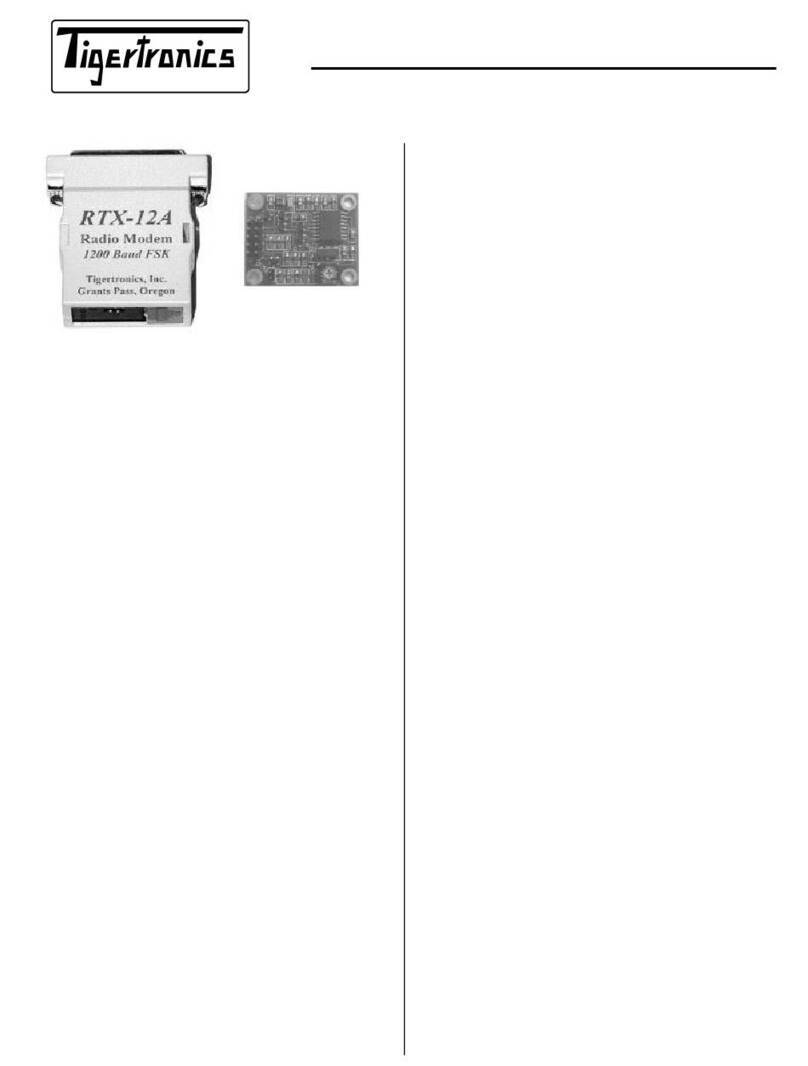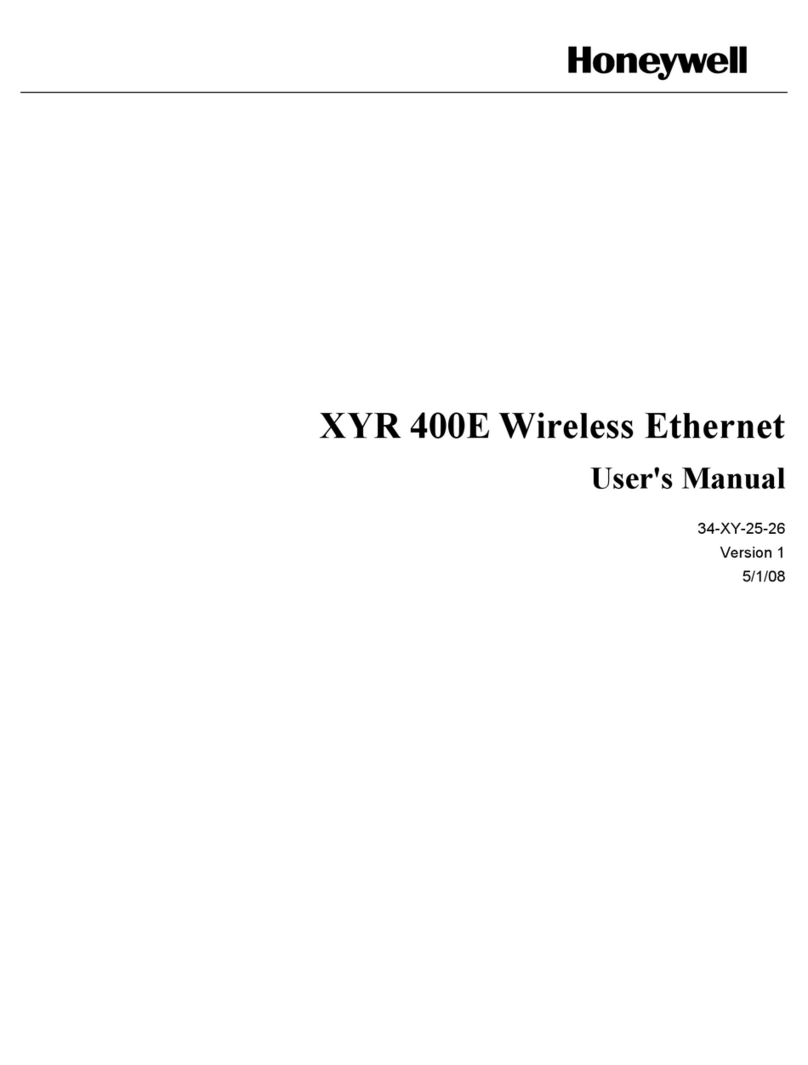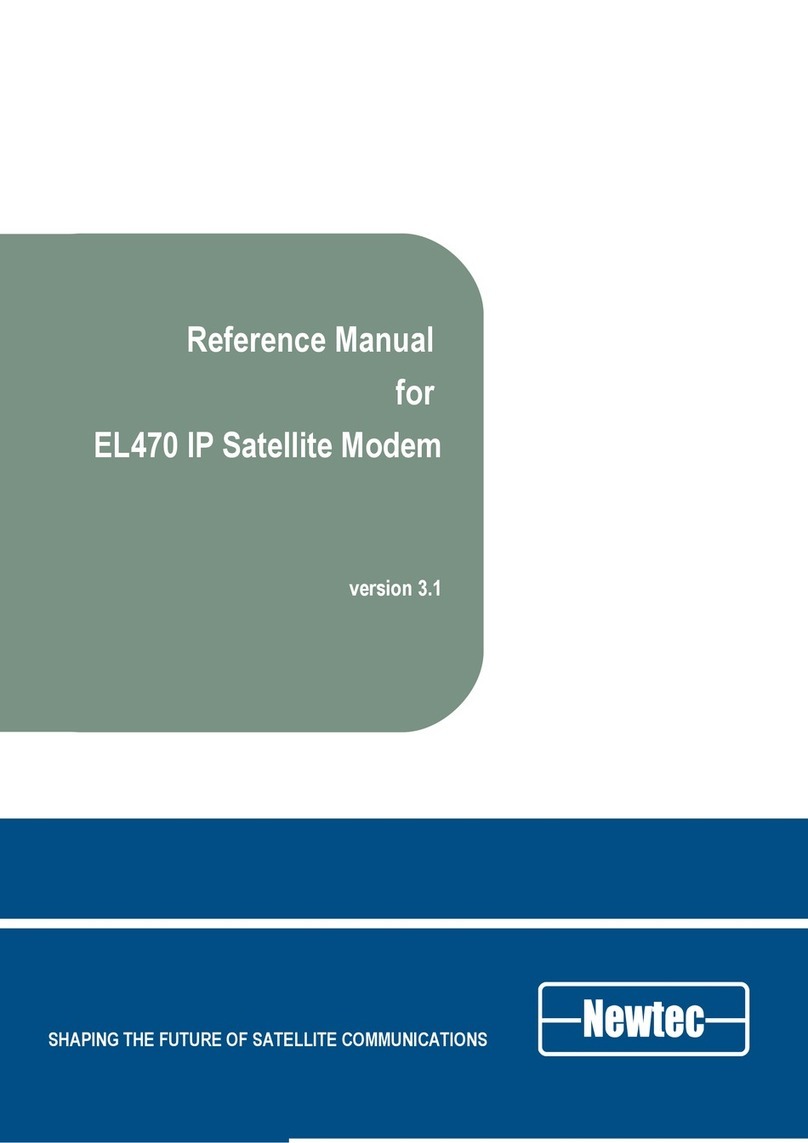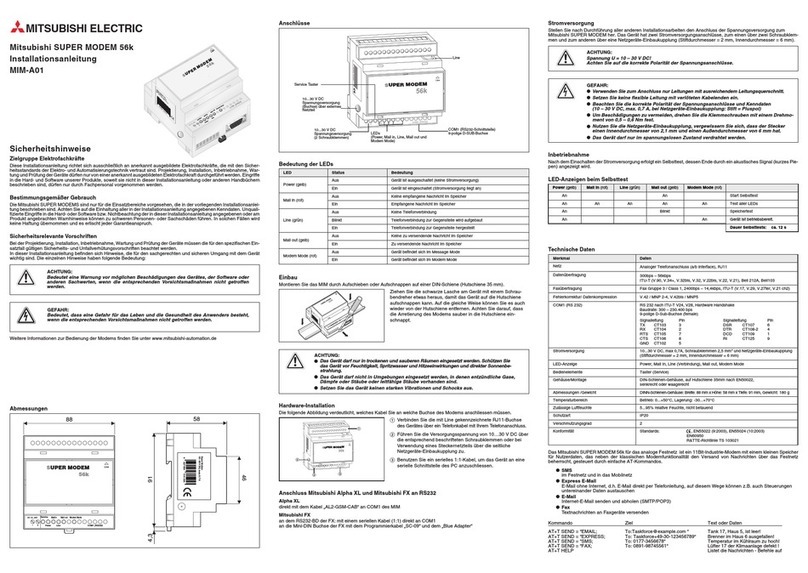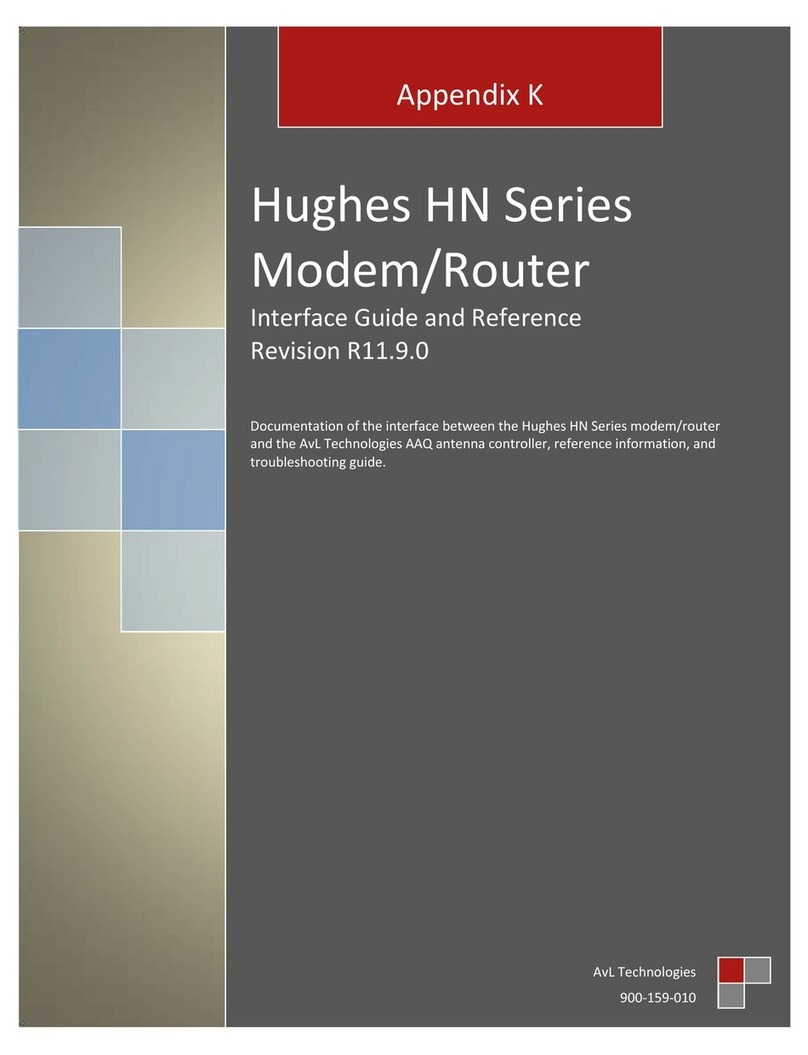INSTALLATION:
The Async/Sync Short Haul Modem operates in four twisted-pair topologies: 2-wire/point-to-point, 2-wire/multipoint, 4-wire/point-to-point, and 4-wire/multipoint. In each of these topologies, the twisted-pair wire must be 19-26 AWG "dry", unconditioned metallic
wire. Dial-up analog circuits, such as those used with a standard Hayes compatible modem, are not acceptable. The twisted-pair may be shielded or unshielded. Both types yield favorable results. The Short Haul Modem offers two methods of twisted-pair
connection: RJ-45 jack and terminal blocks. Connect the wire to each Short Haul Modem. The "+" and "-" indicators are for reference only; the modem is not sensitive to polarity.
Two-Wire Installation:
When communicating over a single-twisted-pair circuit, the Short Haul Modem operates half-duplex; that is, it transmits in only one direction at a time. This method of operation is effective for both point-to-point and multipoint applications. In a single-pair point-to-
point applications, you will need a pair of modems for each circuit-- one at each end of the single-pair wire. In single-pair multipoint applications, you will need three or more modems. These can be connected using a star topology, although a daisychain topology is
usually used.
Two-Wire Cable Connection via RJ-45:
The RJ-45 jack on the Short Haul Modem is prewired for a standard telco wiring environment. To be sure you have the right wiring, use the Table below.
Two-Wire Cable Connection via Terminal Blocks:
If you are not going to use the modular jacks, follow the instructions below.
1. Locate the terminal block on the back of the unit.
NOTE:
The "+" and "-" indicators are for reference ONLY.
The Short Haul Modem is not sensitive polarity.
2. Connect one wire of the pair to a Transmit lug (TX+ or TX-) remote modem.
3. Connect the other wire of the pair to the other Transmit lug on both the local and the remote modem.
4. If there is a shield around the telephone cable, it may be connected to GND on the terminal block. We recommend connecting the shield at the computer end only to avoid ground loops. A ground wire is not necessary for proper operation of these units.
Four-Wire Installation:
When communicating over a two-twisted-pair circuit, the Short Haul Modem can operate full- or half-duplex, point-to-point or multipoint. In two pair point-to-point applications, you will need a pair of modems for each circuit-- one at each end of the two-pair wire. In
two-pair multipoint applications, you will need three or more modems. These can be connected using a star topology, although a daisychain topology is usually used.
Four-Wire Cable Connection via RJ-45:
The RJ-45 jack on the Short Haul Modem is prewired for a standard telco wiring environment. To be sure you have the right wiring, use the Table below.
Four-Wire Cable Connection via Terminal Blocks:
If you are not going to use the modular jacks, then follow the instructions below.
1. Locate the terminal block on the back of the unit.
2. Connect one pair of wires in the telephone cable to the Transmit Lugs (TX+ and TX-) on the terminal block.
3. Connect the other pair of wires in the telephone cable to the Receive Lugs (RX+ and RX-) on the terminal block.
Note:
The "+" and "-" indicators are for reference ONLY.
The modem is not sensitive to polarity.
4. If there is a shield around the telephone cable, it may be connected to "G" on the terminal block. We recommend connecting the shield at the computer end only to avoid ground loops. A ground wire is not necessary for proper operation of these units.
Four-Wire Multipoint Installation:
Multipoint operation involves the connection of several terminals to one host port. In such an application, one local Short Haul Modem is used as a master unit, and it is connected to several remote modems that are acting as slaves. Up to 25 modem slaves may be
connected to one host modem, provided that the computing hardware and software support that many terminal drops. In a multipoint environment, the master Short Haul Modem transmits continuously. Initiation of two-way communication is carrier-controlled by each
"slave" modem. To facilitate multipoint communication, the master modem should have its carrier control DIP switch set to "constantly ON" (S1-8 = ON).
Multipoint Twisted-Pair Connection:
The Short Haul Modem supports multipoint applications using a star topology. Maximum distance between the units will vary based upon the number of drops, data rate, wire gauge, etc.






